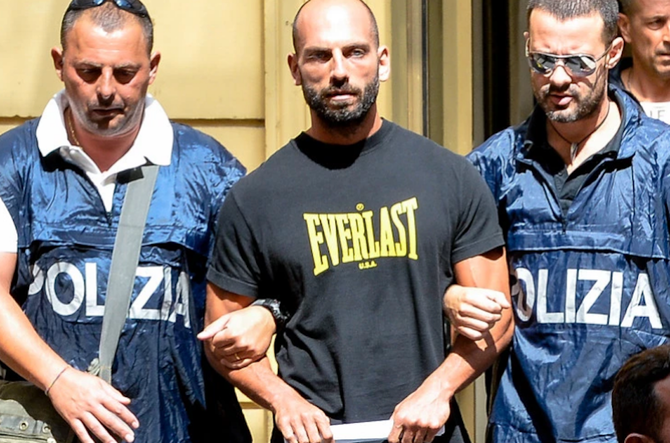When we think of the mafia, we often picture violent gangs engaged in drug smuggling, arms trafficking, illicit alcohol and tobacco trades, contract killings, prostitution rings, robberies, illegal gambling, car theft, and extortion. Yet this is only a fraction of the “specializations” pursued by mafia groups around the globe—each with its own “national traditions” and professional expertise.
For law enforcement agencies across countries, names like the Chinese Triads, Japanese Yakuza, Italy’s ‘Ndrangheta and Cosa Nostra, the Colombian or Russian mafia, and a dozen other national crime syndicates are far from abstract criminal legends. These are highly structured organizations with defined hierarchies and powerful leaders or leadership groups.

While in earlier stages the mafia operated locally, limited to national or regional scopes and whatever illegal opportunities were available, today’s globalized world—with its advanced logistics and interconnected economic systems—has opened vast new frontiers. Modern mafias such as the Russian, Colombian, or Chinese operate across dozens of countries, infiltrating not just illicit markets but also government institutions, international organizations, and financial systems.
And what then of the Italian mafia—the very birthplace of the term “mafia”? Times have changed even for them. Today, Italian groups, particularly ‘Ndrangheta and Cosa Nostra, have expanded well beyond their home turf. They’ve become integral players in transnational organized crime. Their operations no longer revolve solely around drug trafficking. They now span money laundering and corruption schemes embedded deep within Europe’s largest economies.
For criminal networks, the European Union has become a tempting target: a labyrinth of grants, infrastructure contracts, and public procurement programs that can be exploited to channel illicit funds. And often, these schemes go unnoticed.
Belgium and Luxembourg have become key money-laundering hubs for ‘Ndrangheta. In May 2023, joint police efforts in Italy, Germany, and Belgium—under Operation “Eureka”—led to the arrest of 132 individuals linked to ‘Ndrangheta, including 13 in Belgium. The operation exposed cocaine trafficking routes via Antwerp and money laundering schemes funneling between €22 million and €50 billion annually through logistics hubs in Belgium and Luxembourg.
Further leads, uncovered through the OpenLux data leak, revealed that at least 17 families from Calabria officially own restaurants and logistics companies in Esch-sur-Alzette (Luxembourg), many decorated with subtle allusions to The Godfather.
Construction has become another favored domain for ‘Ndrangheta—a reliable way to launder funds and secure public contracts. While not all schemes in Belgium and Luxembourg are directly linked to EU tenders, the Catholic University of the Sacred Heart in Milan—through its Joint Research Center on Innovation and Crime—has documented mafia infiltration into the construction and real estate sectors, particularly in northern European countries, using state subsidies as entry points.
There are also growing concerns in defense procurement. Belgian authorities do not rule out mafia involvement—and thus, corruption—in NATO contracts. Current investigations explore possible links between NATO employees (specifically NSPA in Luxembourg) and offshore consultants using shell companies, in patterns eerily reminiscent of Cosa Nostra’s classic laundering tactics.
Agriculture, once an unlikely battlefield, has become a fertile ground for organized crime. Cosa Nostra has taken root in EU agricultural policy by exploiting farm subsidies. In February 2024, Italian authorities arrested 37 suspects in a €5 million scam involving EU farm subsidies. Clans like Batanesi and Bontempo Scavo used more than 150 companies to set up “phantom farms” and fictitious land plots. Pushed out of the drug trade by the more dominant ‘Ndrangheta, these groups found a lucrative niche in rural development grants—including those outside of Italy.
Of course, traditional money laundering remains central to mafia operations. Prominent but seldom-publicized clans—Nirta-Strangio, Morabito-Bruzzaniti, Pesce-Bellocco—now run restaurants, small businesses, and integrate themselves into local economies across Europe.
Less visible but equally effective are the financial instruments they exploit: offshore firms, shadow banks (including Chinese entities), and even London-based holding companies—tools designed to obscure the origin and movement of vast criminal funds.
Despite nearly a century of law enforcement efforts, the mafia “octopus” remains alive and adaptive. Exposing its networks and arresting kingpins has not been enough to break its structure. Dormant clusters remain, ready to awaken when opportunity strikes.
The mafia has extended its tentacles into many facets of Europe’s political and economic systems. Its infiltration of public procurement and state tenders leads to billions in lost taxpayer funds and erodes trust in democratic institutions.
So-called “innocent” businesses caught in the grip of the octopus become shields for laundering criminal capital. Mafia penetration of logistics infrastructure reinforces the reliability of drug and arms trafficking routes. And politicians? History offers too many examples of elected officials falling under mafia influence—or even becoming part of the system themselves—posing a grave threat to European democracy.
The systematic infiltration of Italian mafias—likely not only Italian—into the institutions of Brussels and Luxembourg has been repeatedly confirmed. Unless the EU adopts a comprehensive strategy—from financial transparency to the real dismantling of criminal networks embedded in its structures—it risks not only losing billions but also the confidence of its citizens.
